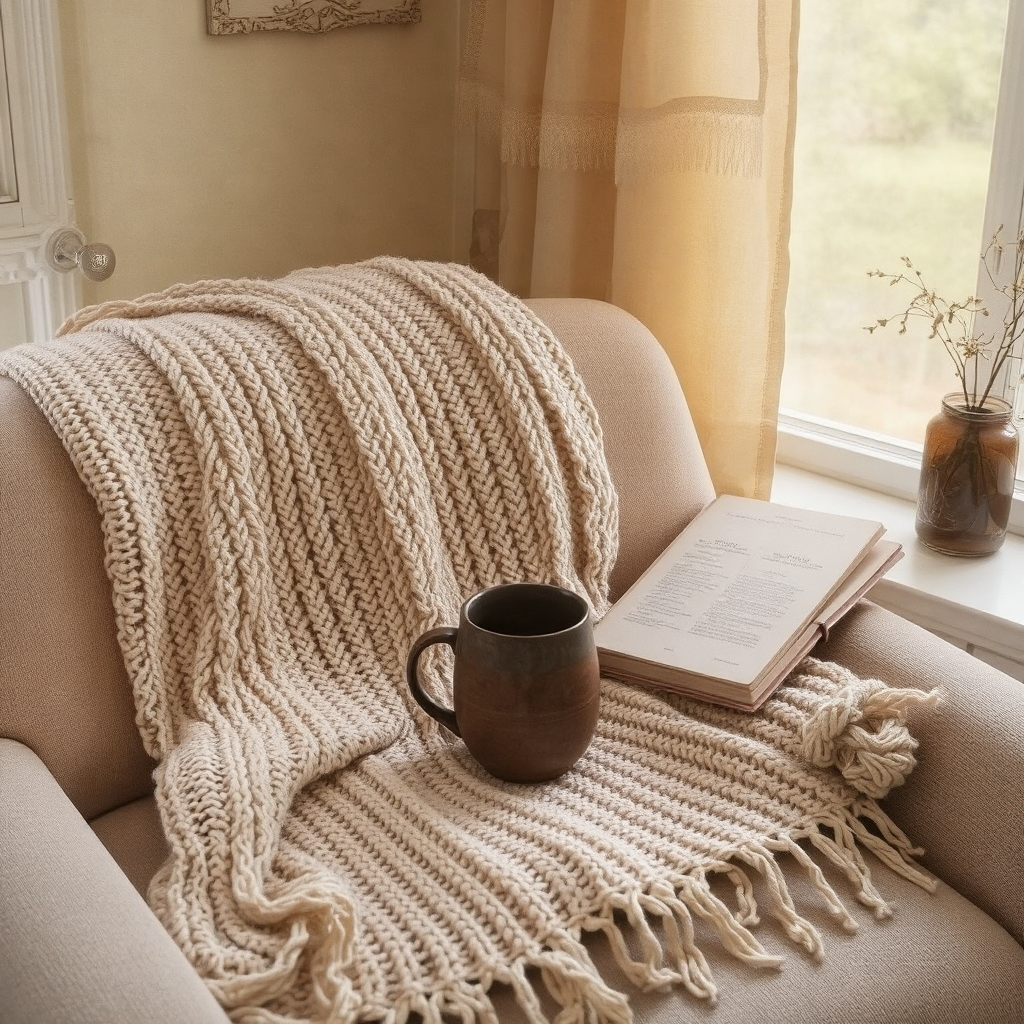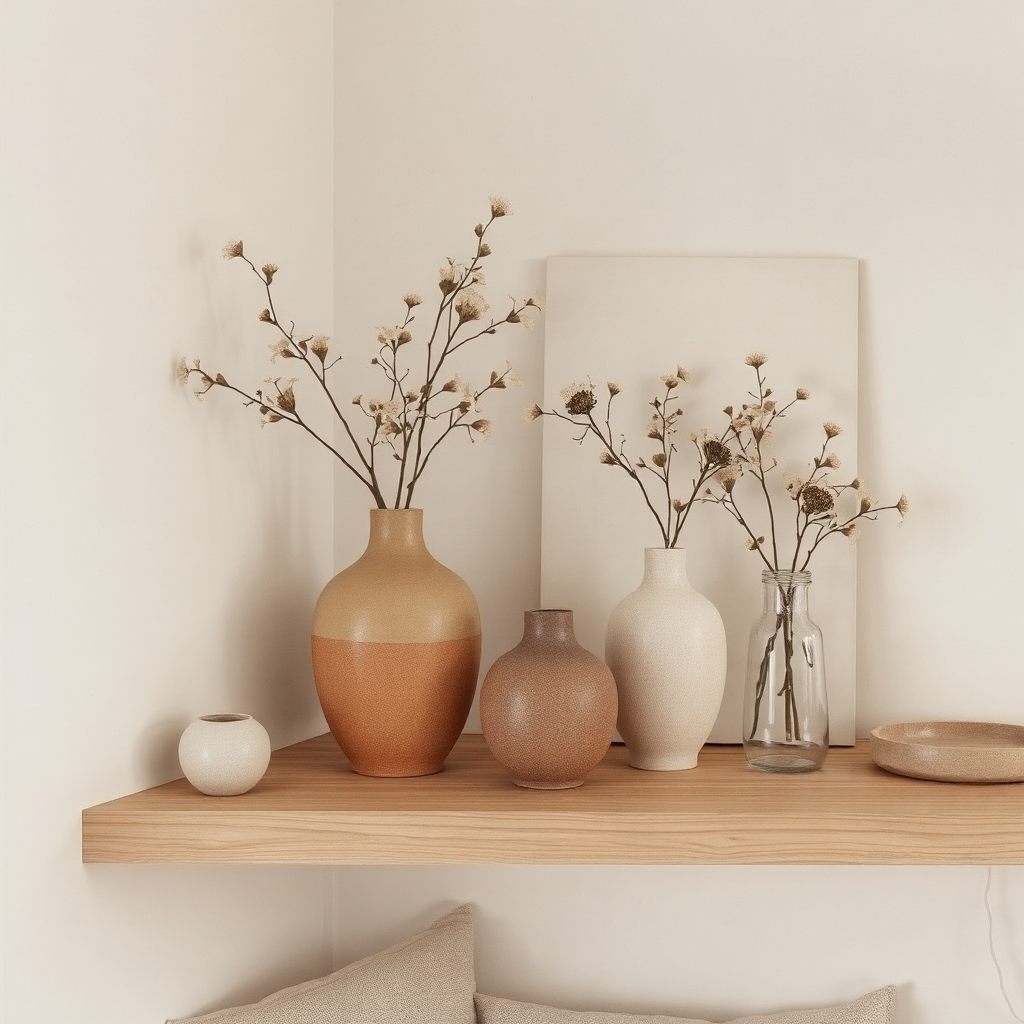Introduction to Intentional Cozy Living
Cozy living implies much more than merely arranging furniture in a pleasant manner; it encapsulates an intentional design choice that promotes comfort and personalization within one’s home. The concept of cozy living revolves around the idea of creating a sanctuary that reflects individual personality while simultaneously evoking feelings of warmth and security. This deliberate approach to home design acknowledges that our surroundings significantly influence our mood, productivity, and overall wellbeing.
Intentional cozy living focuses on selecting decor, colors, and furnishings that resonate with one’s personal style and preferences. It encourages individuals to consider how they want their home to feel, rather than simply following trends. By making thoughtful choices in terms of textiles, lighting, and layout, homeowners can cultivate an environment that fosters relaxation and a sense of belonging. Whether it is the comforting embrace of a soft throw or the ambient glow of strategically placed lighting, each element plays a crucial role in creating a cozy atmosphere.
Furthermore, this approach draws on the idea of maximizing spatial functionality without compromising aesthetic appeal. A well-designed, cozy space can accommodate various activities, from quiet reflection to lively gatherings with loved ones, emphasizing the importance of adaptability in design. Creative use of natural materials, plants, and playful yet soothing color palettes can bring the outdoors in, thereby enhancing the feeling of coziness and tranquility in the home.
By embracing intentional cozy living, individuals can transform their residences into unique expressions of themselves—a place that not only welcomes them but also nurtures their spirit. This introductory exploration serves as a foundation for understanding how thoughtful design choices can elevate the feelings of comfort and contentment in one’s living space.
The Psychology of Cozy Spaces
The notion of coziness transcends mere aesthetic appeal; it is deeply intertwined with our psychological well-being. Creating a cozy space can significantly influence one’s mood, stress levels, and overall mental health. Central to this experience is color therapy, which highlights how different shades can evoke specific emotions. For instance, warm hues like soft oranges and yellows tend to create an inviting atmosphere, while cooler colors like blues and greens promote calmness. By carefully selecting colors for walls, furnishings, and decor, individuals can craft spaces that resonate with their emotional needs.
The layout of a room also plays a crucial role in establishing a cozy environment. Open and cluttered layouts might lead to feelings of chaos and discomfort, while more confined, organized arrangements invite a sense of safety and tranquility. Furniture placement should encourage social interaction and ease of movement, which fosters connectivity and belonging. By arranging seating in a circular or grouped manner, one can create an intimate setting that encourages conversation and relaxation.
Moreover, the emotional connection we share with our belongings can enhance the coziness of our spaces. Items that have personal significance, such as family heirlooms, travel souvenirs, or handmade crafts, add layers of warmth and individuality to a room. This personal touch not only makes a space feel unique but also stimulates positive memories, further boosting mood and comfort levels. Intentionality in the selection and placement of these items can transform an ordinary living area into a sanctuary filled with meaning and familiarity.
Overall, understanding the psychological aspects of coziness aids individuals in designing their environments in ways that enhance well-being. By employing principles like color choice, thoughtful layout, and meaningful decor, one can create a home that feels intentional and nurturing.
Choosing the Right Colors and Textures
Creating a cozy environment is significantly influenced by the choice of colors and textures within a space. When aiming for a warm and inviting atmosphere, selecting the right color schemes is paramount. Warm colors such as soft reds, earthy browns, and muted yellows can evoke feelings of comfort and relaxation. These hues promote an inviting ambiance, perfect for areas intended for gathering and leisure. In contrast, cooler colors, while elegant, tend to create a more sterile environment; thus, they may not be the best choice when aiming for warmth.
The application of color extends beyond paint on the walls. Textiles play a critical role in comfort as well. Fabrics such as wool, cotton, and linen, particularly when they feature warm colors or natural tones, enhance the overall cozy aesthetic. Incorporating a variety of textures through pillows, throws, and upholstery can help establish a layered, personable atmosphere. For instance, pairing soft cashmere with rustic burlap creates visual dynamics and invites touch, which is vital for a cozy environment.
Additionally, consider using textured wall treatments or accent pieces, such as wood beams or stone accents, which can add depth and character to your space. These materials not only provide visual interest but also enhance the tactile experience, engaging the senses of both sight and touch. When selecting paint colors, opt for matte finishes over glossy ones, as they tend to absorb light, contributing to a warm, inviting setting. Ultimately, the careful curation of color and texture is essential for fostering a space that feels intentional and soothing, creating an atmosphere where individuals can unwind and feel at home.
Lighting for a Cozy Ambiance
Creating a cozy atmosphere in your home heavily relies on the proper use of lighting. The right lighting not only serves functional tasks but also contributes significantly to the overall mood of a space. There are three main types of lighting to consider: ambient, task, and accent lighting, each playing a distinct role in establishing a warm and inviting environment.
Ambient lighting serves as the foundational source of illumination, providing a soft and uniform glow that fills the room. This can be achieved through overhead fixtures, such as chandeliers or ceiling-mounted lights, often fitted with warm-toned bulbs to enhance the feeling of comfort. When selecting ambient lighting, consider dimmable options, which allow you to adjust the brightness levels according to the time of day or specific activities.
Task lighting focuses on specific areas, making it easier to perform activities such as reading or cooking. Table lamps, floor lamps, or under-cabinet lighting in the kitchen can create functional spots that still maintain a cozy feel. Selecting warm light bulbs for task lighting will prevent stark contrasts with ambient light and enhance comfort.
Accent lighting is another essential element in establishing warmth within a space. This type of lighting highlights specific features, such as artwork, shelves, or architectural details. Picture lights, wall sconces, or even decorative candles can add layers of depth and interest, drawing attention to focal points without overwhelming the entire room.
In addition to these types of lighting, incorporating natural light plays a pivotal role in achieving a cozy ambiance. Utilize sheer curtains to allow sunlight to filter in softly while maintaining privacy. Mirrors can also be strategically placed to reflect natural light, making spaces feel larger and more inviting. By thoughtfully integrating various lighting sources—creating a layered approach—you can successfully cultivate an environment that feels warm, intentional, and welcoming.
Furniture Arrangement for Comfort and Flow
Creating a cozy atmosphere in your home starts with the strategic arrangement of furniture. This foundational element plays a crucial role in promoting comfort, facilitating easy movement, and encouraging social interaction among occupants. When thoughtfully arranged, furniture can enhance a sense of belonging and tranquility that characterizes a welcoming space.
To achieve an inviting layout, consider setting up your furniture in a way that optimizes conversation flow. Group seating options, such as sofas and chairs, around a central point, like a coffee table or fireplace. This configuration creates a natural gathering spot, making it conducive for discussions and relaxation. Avoid pushing all seating against the walls; instead, aim for an arrangement that draws individuals into the shared space. This not only enhances engagement but also fosters a sense of intimacy and connection within the home.
Selecting the right furniture pieces is equally important in cultivating a cozy environment. Prioritize comfort with plush sofas and soft armchairs that invite lounging and relaxation. Opt for materials that exude warmth, such as wood, natural fabrics, and textiles. These choices can significantly impact the vibe of the room, reinforcing the intentionality behind your design. Additionally, consider the scale of your furniture in relation to your space. Oversized pieces can overwhelm smaller areas, while petite furnishings may feel inadequate in larger rooms. Striking the right balance ensures that the overall layout maintains harmony.
Lastly, incorporate elements that evoke warmth, such as rugs, cushions, or throws. These accessories can serve as visual anchors, defining spaces while providing additional comfort. By thoughtfully arranging your furniture and selecting pieces that contribute to a cozy ambiance, you create an intentional home that prioritizes both comfort and flow.
Incorporating Personal Elements and Memories
Creating a warm and inviting atmosphere in your home often begins with infusing it with personal elements that resonate with your journey and experiences. Personal touches such as family heirlooms, travel souvenirs, and original artwork contribute significantly to the character of a space, making it feel uniquely yours. These items carry stories, emotions, and memories that can transform a house into a home.
Family heirlooms, whether they are antique furniture pieces, fine china, or handmade crafts, serve not just as decor but as a tangible connection to your ancestry. Incorporating these items into your design can evoke nostalgia and foster a sense of belonging. For example, a beautifully restored grandfather clock or a vintage quilt passed down through generations can serve as a focal point, inviting admiration and sparking conversations about family history.
Travel souvenirs also play a vital role in home design. Items collected from different cultures and locales can reflect your adventures, interests, and appreciation of diversity. Placing a vibrant Moroccan rug alongside a collection of pottery from Greece can create a visually appealing mix that tells a story of exploration and discovery. When strategically displayed, these pieces can act as conversation starters, inviting guests to share in your experiences while enriching the overall aesthetic of your home.
Additionally, integrating personal artwork adds another layer of intimacy to your space. Whether it’s paintings created by a friend, photographs depicting cherished moments, or your own artistic endeavors, these pieces convey your personality and emotional memories. Arranging these artworks in a gallery wall or integrating them into your existing decor can create a unique narrative that resonates with both you and your visitors.
Ultimately, personal elements in your home design not only enhance the aesthetic appeal but also foster emotional connections, offering warmth and a sense of belonging. By thoughtfully incorporating these touches, you create an intentional space that reflects who you are and the memories you cherish.
Sustainable Choices for Cozy Living
Creating a cozy home environment is not just about aesthetics, but also about the materials and products we choose. Embracing sustainable choices in home design contributes significantly to creating an intentional living space. When selecting furnishings, it is beneficial to prioritize eco-friendly materials such as bamboo, reclaimed wood, and organic cotton. These materials not only reduce the environmental impact but also add a warm and inviting touch to any room.
Upcycling is another excellent strategy for sustainable living. Instead of discarding old furniture or decor, consider how these items could be transformed into something useful and stylish. For example, an old ladder can be repurposed into a distinctive bookshelf, while vintage suitcases can serve as unique storage solutions. Upcycling not only reduces waste but also allows for personalized touches that reflect one’s own design sensibility and history. This process fosters a deeper connection to the space and enhances the overall cozy ambiance.
Local sourcing also plays a crucial role in sustainable living practices. Supporting local artisans and businesses not only reduces carbon emissions associated with transportation but also helps to foster a sense of community. By purchasing locally made products, you can find unique furniture and decor that is likely to have a story behind it, thus enhancing the intentionality of your living space. Additionally, farmers’ markets and local craft fairs are excellent sources for acquiring handmade items that can add character and comfort to your home.
In essence, integrating sustainable choices into your home design not only aids in fostering a cozy atmosphere but also promotes environmental consciousness. By opting for eco-friendly materials, engaging in upcycling, and supporting local sources, you can create a home that truly reflects a thoughtful and intentional lifestyle.
Seasonal Decor: Keeping Cozy Year-Round
Transforming your home’s atmosphere to reflect the changing seasons allows for a refreshing and intentional design approach. The use of seasonal decor not only enhances the coziness of your space but also brings a dynamic element to your interior design. To achieve a harmonious ambiance throughout the year, it is paramount to focus on selecting colors, textures, and decorative items that resonate with each season’s unique characteristics.
During spring, for example, light and airy colors such as soft pastels or vibrant greens can invigorate your space. Consider incorporating throw pillows and blankets in these hues, alongside floral arrangements that celebrate nature’s rebirth. Textured fabrics, such as linen or cotton, add a fresh feel to furniture and accessories. Transitioning into summer, opt for brighter colors, such as yellows and turquoises, which evoke a sense of warmth and joy. Incorporate lightweight outdoor fabrics, allowing for an accent of the outdoors inside, creating an open and breezy environment.
As autumn approaches, draw upon earth tones and deeper hues, including rich reds, oranges, and browns. Decorate with plush materials that exude warmth and comfort, such as wool or faux fur throws. Integrating natural elements, such as pumpkins or pinecones, can enhance the seasonal feel while maintaining a cozy atmosphere. During winter, focus on creating a warm refuge with colors like deep blues, whites, and jewel tones. Cozy blankets, intricate patterns, and ambient lighting can cultivate a soothing environment, perfect for the colder months.
To maintain intentionality in your seasonal decor, prioritize a few key decorations that can be easily transitioned from one season to another, while also being mindful of the overall design aesthetic of your home. By thoughtfully curating your seasonal decor, you will ensure that your home remains cozy and inviting all year round, embracing the charm of each season.
Conclusion: Embracing a Cozy Lifestyle
As we reflect on the journey of designing a cozy home, it becomes evident that the essence of a warm and inviting space lies not only in its aesthetics but also in the intention behind each choice made. A cozy environment can significantly enhance our overall well-being, providing a sanctuary that nurtures both comfort and relaxation. Throughout this post, we have explored various elements that contribute to creating such an intentional home, from selecting the right colors and textures to incorporating personal memorabilia and mindful arrangements.
The integration of these elements encourages a deeper connection between individuals and their living spaces. By prioritizing comfort and functionality while maintaining a visually appealing decor, we can transform our homes into havens that reflect our personalities and promote peacefulness. The journey towards embracing a cozy lifestyle is indeed a rewarding one, filled with opportunities to express creativity and showcase individuality. Small adjustments, like adding layered textiles, optimizing lighting, or cultivating greenery, can profoundly impact the overall atmosphere of a space.
As you embark on your quest to create a more intentional, cozy home, consider the insights shared throughout this blog post. Each suggestion offers a pathway to foster warmth and connection within your environment, harmonizing your space with your lifestyle. We encourage you to embrace this journey wholeheartedly, making conscious choices that resonate with your personal definition of coziness. Remember, a cozy atmosphere can flourish with thoughtful care, significantly enhancing your daily experience.
We invite you to share your cozy spaces and the inspirations that guide you on this path. By exchanging ideas, we contribute to a larger community dedicated to nurturing comfort in our homes. Together, let us celebrate the beauty of a cozy lifestyle.



